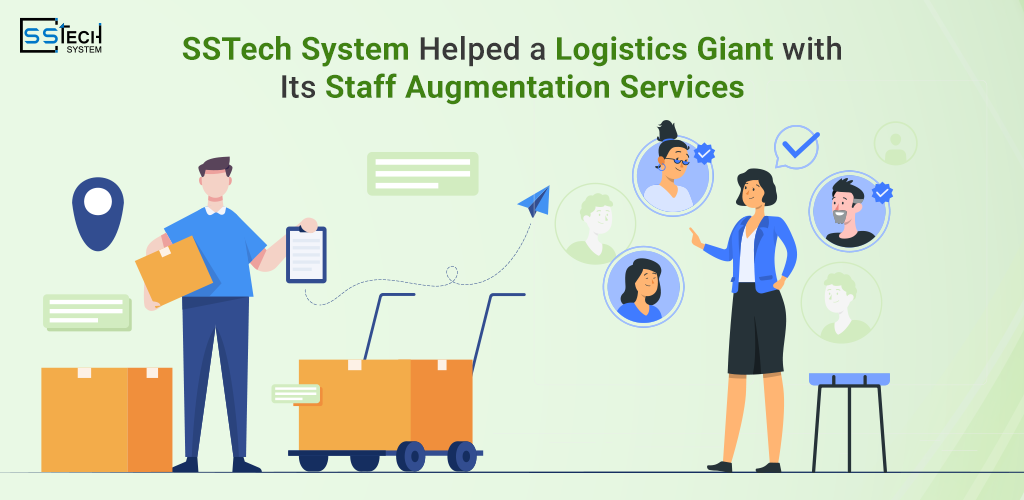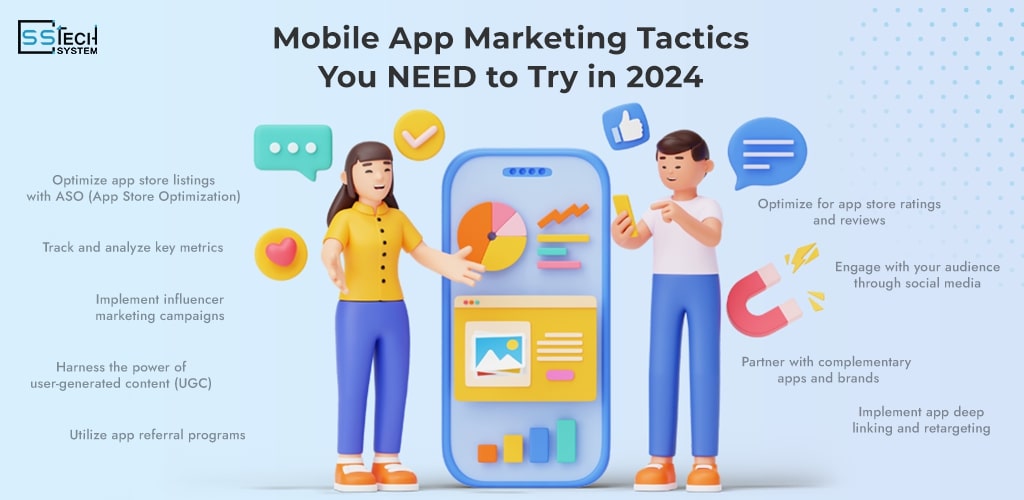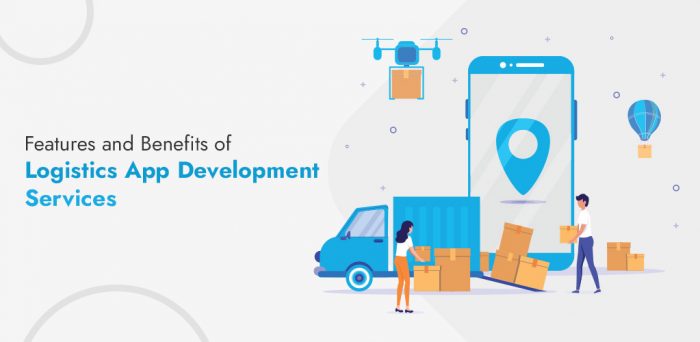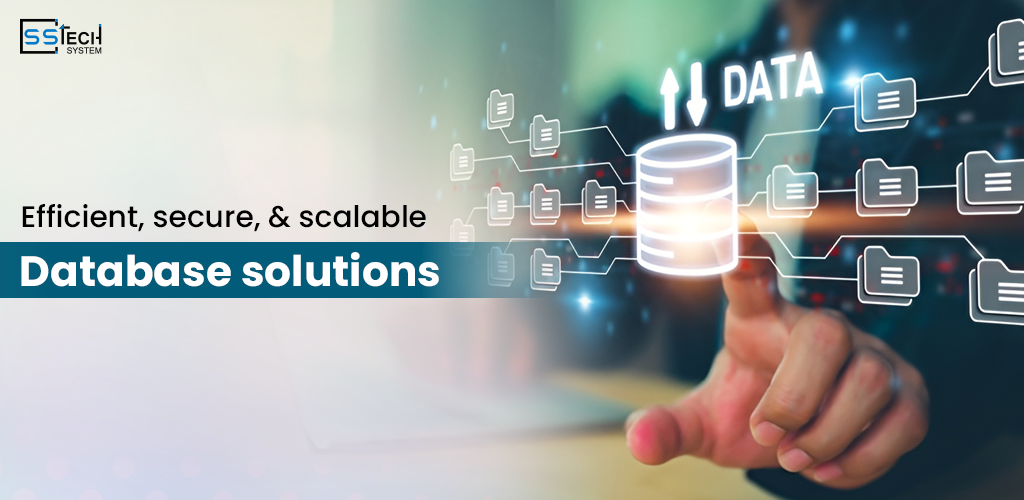
In a dynamic and modern digitalized world, you require a partner that is able to not only provide the most advanced IT solutions but also able to expand and reduce the workforce dynamically and smoothly.
This is where SSTech System comes into play. SSTech System is an international provider of IT solutions and staffing that helps fast-growing businesses address their technology and manpower requirements quickly and cost-effectively.
What is staff augmentation, and what is its value to your type of business? Simply put, staff augmentation implies that you outsource professionals developers, testers, business analysts, and infrastructure engineers on a flexible basis to supplement your staff.
This can enable you to flex your workforce up and down according to the project’s needs, address skills shortages, reduce onboarding time, and eliminate the long lead times and non-recyclable costs of full-time staffing.
Here we are talking about one of our flagship engagements, a major logistics client. It is also one of the largest firms in its industry with operations in various geographies that deal with warehousing, freight-forwarding, transportation, last-mile delivery and end-to-end visibility of supply-chain operations.
The world is moving faster, global companies are under pressure to digitise: to enable real-time shipment tracking, predictive analytics, warehouse automation, IoT tracking and last mile optimisation – to safely interoperate legacy systems, modernise infrastructure, recruit talent at scale.
It is against such a background that the staff augmentation service offered by SSTech System gave this logistics giant the power to scale effectively to achieve its business objectives, deliver its projects at a faster rate and to adapt to the changing demands in the digital-economy environment.
The blog will address the following: what issues the client encountered; why the client selected SSTech System; how we handled staff augmentation; the outcome we attained (quantitatively and qualitatively); and finally, what you can learn that you can apply in your business.
What is Staff Augmentation?
It is a good idea to define what staff augmentation is before picking up the case study. The essence of staff augmentation is that it is a flexible outsourcing model that enables you to contract with a business, the hiring company, to augment your in-house operations with external professionals who become part of your workflows and report directly to you.
Staff augmentation does not require you to give over a complete project to an external vendor (as is the case in traditional outsourcing or managed services) giving you control over project direction, and providing you access to external talent very quickly to fill gaps.
This model has such advantages as:
- Flexibility – you scale up or down as needed, matching team size to workload rather than fixed headcount.
- Access to specialised skills – you bring in experts in specific technologies or domains you may lack internally.
- Cost-effectiveness – reduced hiring and training overheads, lower fixed payroll, and faster ramp-up.
- Faster time-to-market – because you avoid long recruitment cycles, and can onboard contractors faster.
For example, one study cited in the US market found that businesses using IT staff augmentation could bring new products to market about 20% faster than those relying only on internal teams.
According to data, the IT Services market is poised for a significant revenue surge, with projected revenue of US$1.50tn in 2025. In a logistics or supply-chain business (as in our client’s case), where project demands fluctuate, digital-transformation initiatives are ongoing and skills such as IoT, cloud, data-analytics and automation are in play, staff augmentation becomes a strategic lever, not just a cost-cutting tactic.
Why Logistics Companies Need It
Why is staff augmentation particularly relevant for logistics companies? Let’s outline several industry-specific needs:
Rapid digital-transformation pressure
Logistics businesses are expected to modernise at speed: deploying warehouse-management systems, real-time cargo tracking, predictive analytics, AI-driven routing, autonomous vehicles etc. According to industry insights, the global digital-transformation market is forecast to reach USD 3.9 trillion by 2027, with logistics among the sectors investing heavily.
Peaks and troughs of project demand
Logistics processes are also different: seasonal peaks, entering new geographies, altering the trade-flows, new regulatory requirements (e.g., customs, e-bill-of-lading) imply that you may need to create dev/test/analytics teams fast, without making a full-time hire.
Skill shortage & technology gaps
The new technologies (cloud, edge-computing, sensor-based IoT, automation) demand specialised expertise that may not always be present in the team of IT specialists in traditional logistics. Staff augmentation will enable you to fill in those gaps within a short span of time.
Cost-efficiency & operational scalability
In the case of large logistics companies, it is important to control fixed overheads. When you are able to scale up project scope and technology potential without correspondingly growing fixed payroll, you enhance the scale and cost-efficiency.
Global operations & distributed teams
The logistics companies usually tend to be distributed in different regions having different time-zones, language, level of infrastructure development. Staff augmentation provides the flexibility to implement off-site or on-site resources in the appropriate locations, including both local and global talent.
The Challenges in Staff Augmentation Faced by Our Logistics Client
We shall now consider our logistics client (one of the largest globally). They decided to hire SSTech System to assist them in their international digital endeavors, although there were critical problems within their organization. Here are the five major ones:
-
Workforce Gaps and Skill Shortages
Although the client possessed a large IT department, the key gaps in the skills were identified in the areas of cloud-native architecture, real-time analytics, IoT integration and automation. In some geographies recruitment was becoming too lengthy. The client had urgent requirements of skilled talent.
-
Outdated Technology Infrastructure
The legacy systems of the client were also constructed using older platforms and as a result, it was difficult to integrate them with the current cloud-native microservices, analytics systems and IoT sensors. The customer required the expertise of the resources that would make the transition between the legacy and the modern.
-
Inefficient Project Timelines
Under the traditional hiring processes, recruiting full-time personnel, training and acclimatizing them to work on multi-sprint projects, the project schedules were lengthened. Critical deliverables were held-up, and this had an impact on the larger supply-chain roadmap.
-
High Operational Costs
Keeping huge permanent payrolls, training new employees, onboarding and subsequently observing the downsizing of the team after the project phases were completed, all this resulted in cost inefficiencies. The client realized that fixed overheads were going up without corresponding business value.
-
Limited In-house Technical Expertise
Although the client possessed good logistics business and supply-chain business experience, he did not have deep technical benches in newer fields like predictive analytics, cloud-edge integration, AI-driven optimisation and global remote team co-ordination. Internal staff was stretched to the limit.
Why the Client Chose SSTech System
Having defined the challenges, let’s look at why the client selected SSTech System as their staff-augmentation partner.
-
Strong track record in providing custom IT solutions and staffing services:
SSTech System has deep experience in delivering enterprise IT solutions, including infrastructure, data-analytics, cloud and staffing across geographies.
-
Proven experience with enterprise clients in logistics, manufacturing and SaaS:
The business understood the specific demands of supply-chain operations, logistics workflows, and the digital-transformation imperatives of that sector.
-
Ability to provide both on-site and remote resources with quick turnaround:
In the client’s global logistics environment, SSTech System could deploy resources locally (on-site) or remotely, depending on project needs, thereby offering flexibility and speed.
-
Focus on long-term partnerships instead of transactional staffing:
SSTech System’s approach emphasised embedding into the client’s team, aligning with business outcomes, and delivering measurable value,not just supplying “bodies”.
-
Dedicated account management and transparent process:
The client appreciated SSTech System’s commitment to transparent reporting, dedicated account managers, and clear communication protocols.
-
Certifications and expertise:
SSTech System brought capabilities in agile methodology, cloud platforms (AWS, Azure, GCP), DevOps, data-analytics and global talent network, differentiators in the market.
Our Approach to Staff Augmentation
This is the way SSTech system organized the engagement and implemented the staff-augmentation service to the client.
Understanding the Client’s Needs
We have started with an in-depth discovery step: stakeholder interviews, current IT workforce evaluation, skills gaps, current project roadmap, infrastructure audit/cultural/operational context of the logistics business. The objective: do not only know the technology but the supply-chain business model, worldwide presence, regulatory requirements, KPIs (on-time delivery, visibility, cost-per-ton, etc.).
Designing a Custom Augmentation Plan
Based on the discovery, SSTech System designed a customised workforce-augmentation plan for the client:
- Defined roles and skill-sets required (cloud architects, IoT/edge engineers, data-scientists, automation specialists, QA/test engineers).
- Defined engagement timelines, ramp-up-and-ramp-down strategy.
- Defined mix of on-site vs remote resources (to match time-zones, region-specific logistics operations).
- Agreed SLA and KPIs with the client: e.g., ability to bring on resources within X weeks, productivity metrics, knowledge-transfer goals.
Flexible Engagement Model
The model gave you, the business, the opportunity to manage the augmented team under your project management. SSTech System was in charge of the resource sourcing, vetting and onboarding, time-sheeting and administrative support, and you retained the control of the workflows, sprint planning and deliverables. Notably, you would be able to scale up or down depending on the phases of the project hence matching the cost to the output.
Technology and Tools Used
To support the enhanced productivity and collaboration:
- Agile development methodology (daily stand-ups, sprints, sprint retrospectives).
- Collaboration tools: Jira, Confluence, Slack/Microsoft Teams for real-time coordination between on-site and remote teams.
- DevOps pipelines and tools for automation, CI/CD, which sped up delivery.
- Cloud monitoring, analytics dashboards to track progress, productivity and quality.
- Periodic knowledge-transfer sessions so the augmented team became familiar with your domain (logistics & supply-chain) and your internal culture.
Communication and Collaboration Process
Clear communication channels were established:
- Weekly steering-committee meeting (client, SSTech System account-manager, key resource leads).
- Daily stand-ups for the extended team.
- Quarterly reviews: resource utilisation, skill upgrades, feedback loops.
- Onboarding & orientation for augmented staff into client’s business context (logistics workflows, KPIs, tech stack, compliance/regulatory aspects).
The Results
We shall examine the results of the engagement, quantitative and qualitative. These findings show that staff augmentation, as done well, can provide a great business impact.
Quantitative Results
- Faster Project Delivery:
The client shortened project delivery by as much as 30% than original baseline estimates by using the augmented team. It implied that the digital-transformation modules (analytics dashboard, integration of IoT sensors, last-mile optimisation) were brought on board earlier, which enhanced speed value realisation.
- Improved Efficiency:
The development and QA teams were able to achieve a more productive environment: sprint-velocity increased roughly a quarter in the first two augmentation quarters.
- Operational Scalability:
The customer increased its technology programs (adding new projects (warehouse automation, transport-routing optimisation, predictive maintenance) without more proportional growth of the fixed payroll headcount. Essentially, you actually had to scale without a proportional scaling of cost.
- Cost Savings:
The client also saved about 40 percent on the cost of hiring and training. Due to the pre-vetted nature of augmented staff, fewer resources were required to onboard them, and the workforce could be shrunk when project stages were over, the overheads on cost were reduced.
- Enhanced System Performance:
With improved data-management and automation, logistics errors (e.g. mis-routing, delayed deliveries, mismatched inventory) were minimized and supply-chain metrics began to be seen better- increasing the fulfilment of SLA and on-time delivery.
Business Impact
- Improved On-Time Delivery:
With the technology systems being more practical and analytics more lifelike, the logistics business enhanced its on-time delivery measure in a quantifiable margin.
- Better Visibility into Supply-Chain Analytics:
The augmented team processed data-science, dashboards and analytics, which allowed the leadership to see more: predictive demand-planning, vehicle utilisation, warehouse dwell-time. This allowed making decisions in advance instead of fixing situations.
- Higher Customer Satisfaction:
The customers of logistics customer also enjoyed more reliable deliveries, enhanced tracking, reduced exceptions, and a higher customer-satisfaction rating and improved customer-retention indicators.
“Working with SSTech System has given us the flexibility to scale our technology team as our supply-chain demands expanded, while keeping cost under control and accelerating our transformation roadmap. We now have the specialist talent we need, when we need it.” – VP IT, Global Logistics & Supply-Chain.
Conclusion
In a digitalized world, where digital transformation is not a luxury, but a necessity, in particular, in the logistics and supply-chain processes, your team and workforce model should be adaptable, agile, and efficient.
Staff augmentation will provide you that flexibility: the capability to scale quickly, fill any skills gaps, expedite deliveries and drive down costs. In the case of the logistics giant in the case study, the difference came in the form of partnering with SSTech System as the globally IT solutions and staffing partner.
They could deliver faster, achieve higher efficiency, ensure operational scalability, save money and generate meaningful business results by designing a custom augmentation plan, integrating external professionals into their processes, adopting agile and DevOps practices, and remaining in control of the project direction.
When you are experiencing such issues with your business, i.e. technology requirements that you cannot meet in house, unpredictable workloads, multinational business, speed and cost are required, then the right partner may be a strategic tool to augment your staff.
Ready to explore how SSTech System can help your business scale efficiently and meet its business goals? Let’s talk.
Frequently Asked Questions
With outsourcing (or managed services) you usually give out an entire project or service to a vendor and they own delivery. In staff augmentation you still own the project, processes and deliverables, but you just add more talent to fit into your staff.
No, not if designed correctly. Since you are contracting external resources on an on-demand basis, you do not have to bear the fixed cost of permanent recruitment (benefits, payroll taxes, time-consuming training). You only pay what you want when you want.
Onboarding can take weeks instead of months depending on the partner and preparation as it is the case with full-time hires. This is one of the reasons why organizations that employed staff augmentation have been found to have a shorter time to market.
Risks involve cultural/communication mis-alignment, lack of knowledge transfer, possible social integration problems against your in-house team and the lack of quality. Mitigation measures: make sure to onboard correctly, have correct communication procedures, include augmented staff as part of your staff rituals, keep the transparency and have clear KPIs.
Organisations that are experiencing a digital transformation require specialised skills, fluctuating workload, or distributed workforce around the world. As an illustration, logistical, manufacturing, SaaS companies, enterprise IT functions. When you own a core internal team, and it is time to scale selectively, the augmentation fits well.










